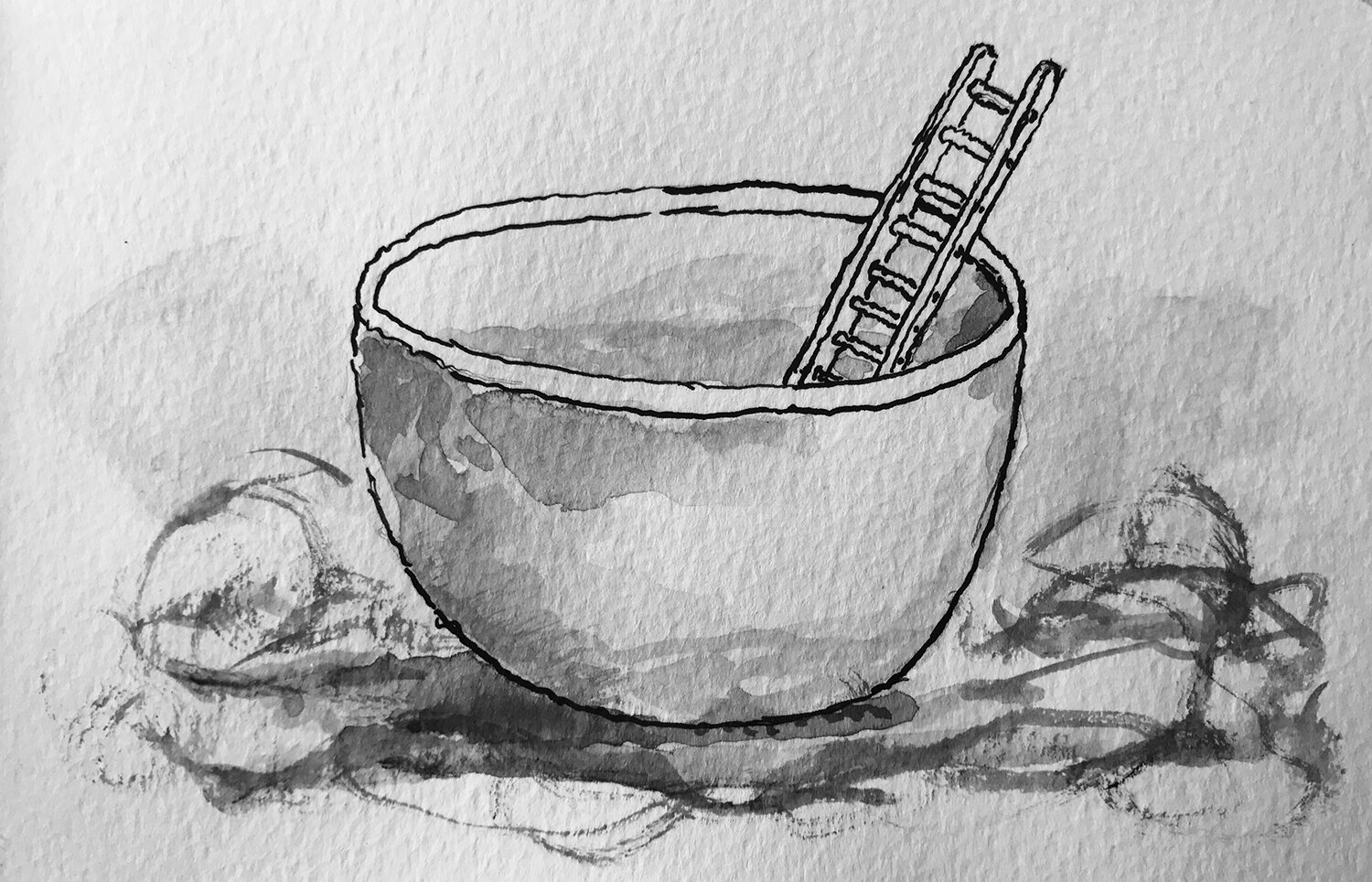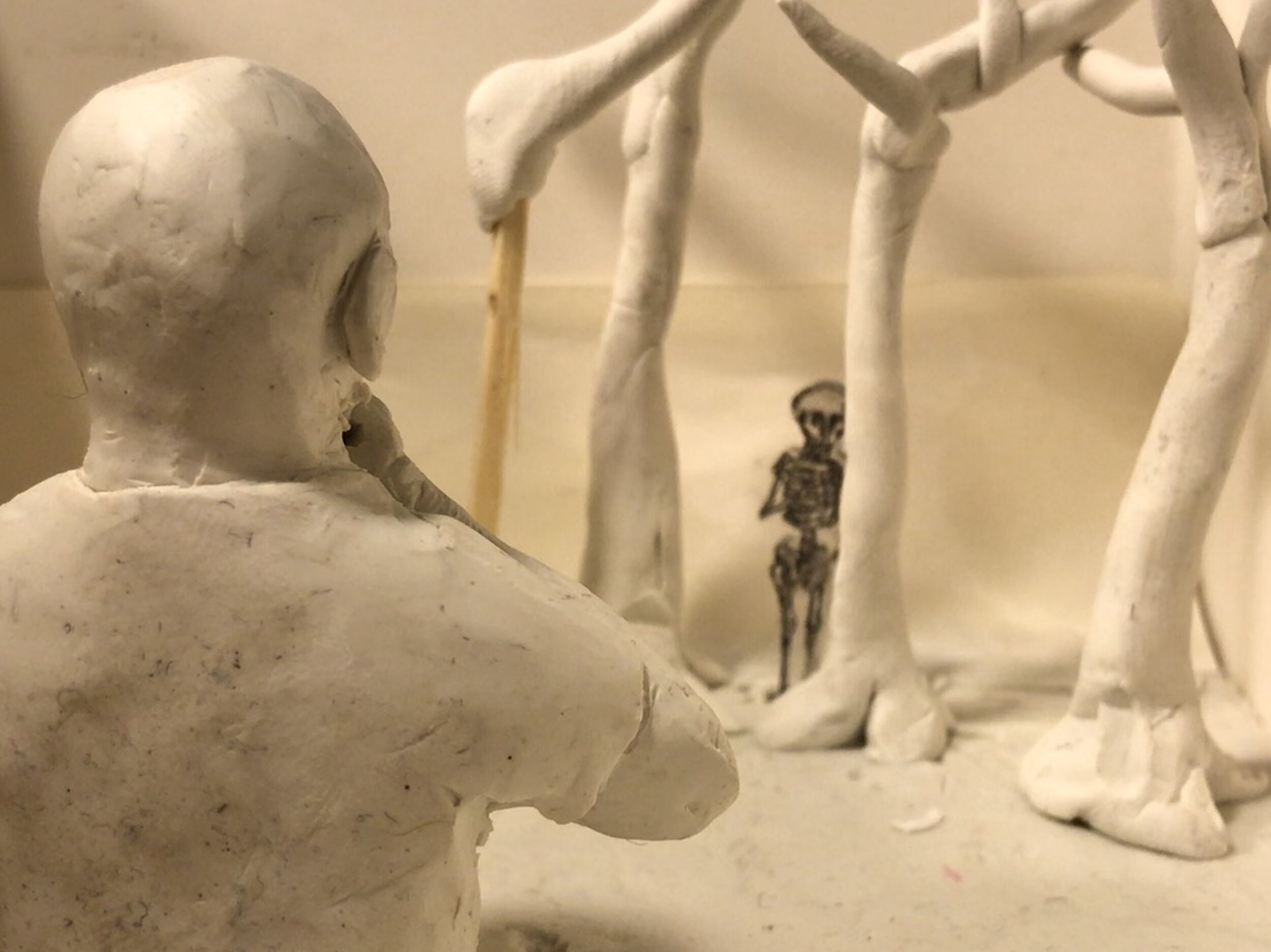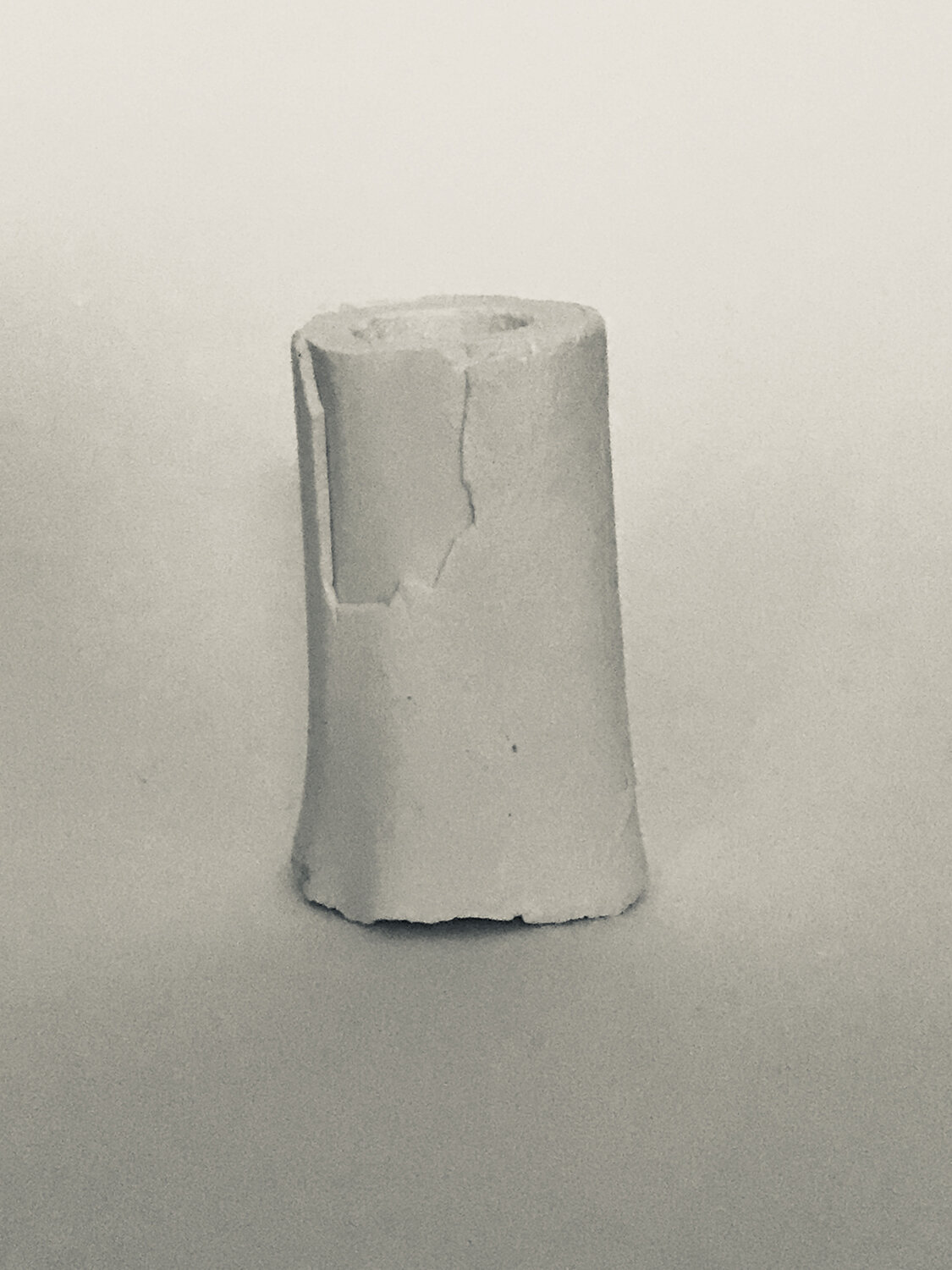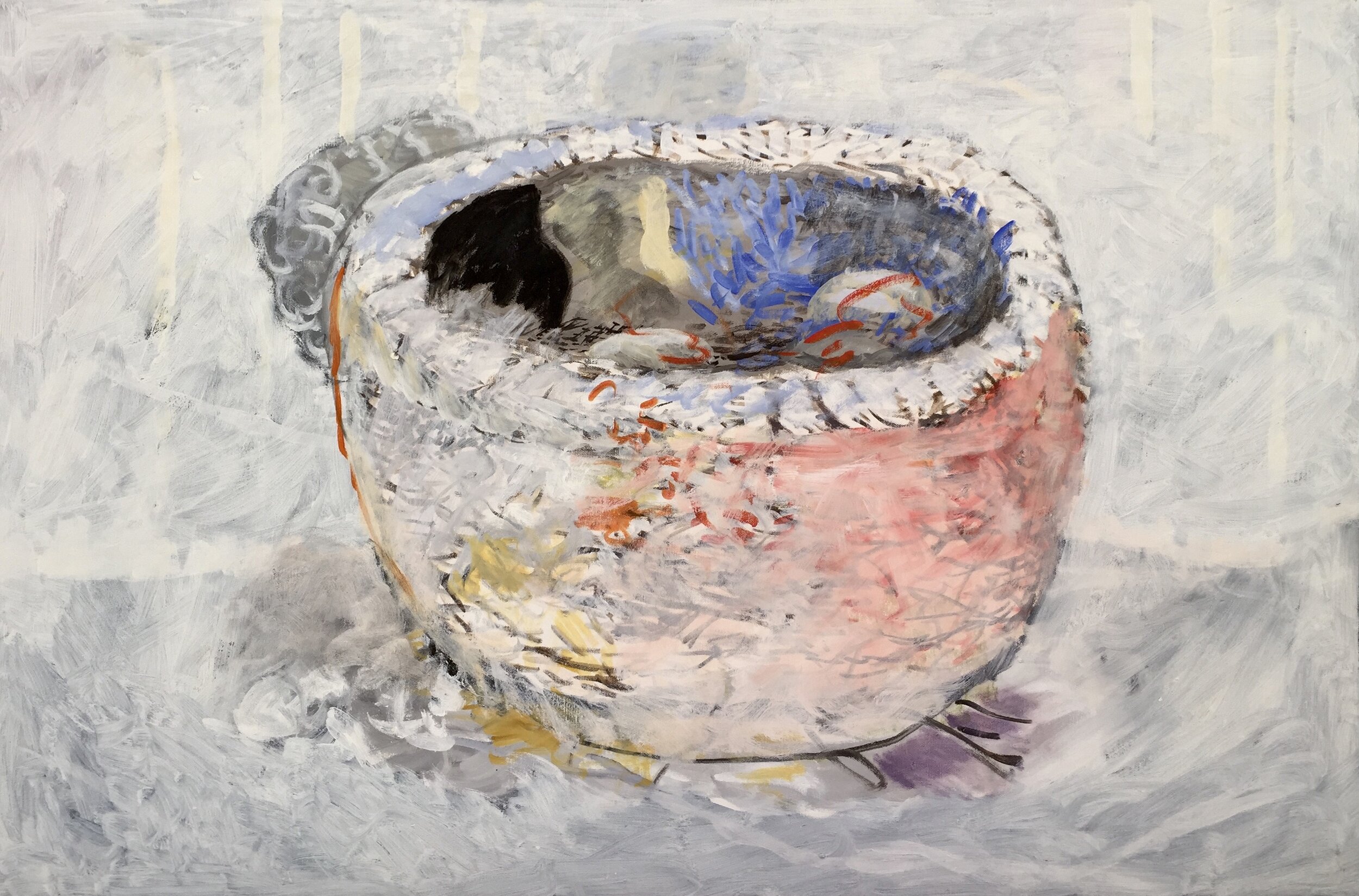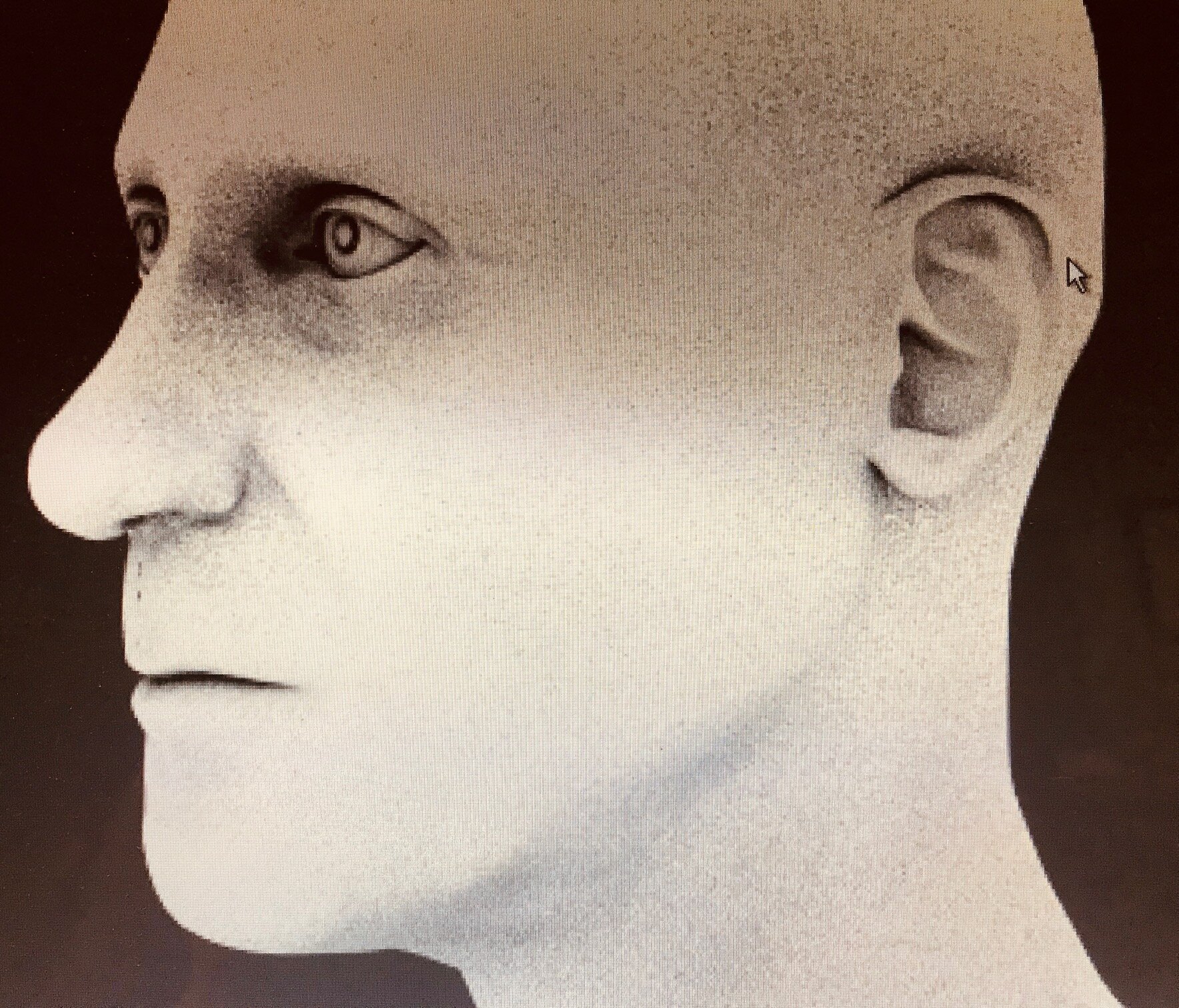Creativity and the Yogic Path
Mary Taylor
Residue from our yoga practice shows up in life in such unique and unexpected ways that sometimes we don’t even notice. In retrospect we may realize that decisions we’ve made or interactions with others were mysteriously informed by the feelings of steadiness and introspection that a good practice left in its wake. But often the benefit of practice goes unnoticed until gradually over time we progress along an imagined path toward we’ve defined as the path toward becoming a yogi. To the astonishment of those of us who practice diligently for years, there are always those we meet along the way who, even before they step onto the mat, seem to be natural born yogis. Not because they can do parlor tricks like grabbing heels in a backbend or putting their foot in their armpit on purpose, but because they are fully at home in the generous, caring realms that are the residue of a good practice. Thes are people who have extraordinary awareness of the world and others and are naturally caring, reflective and compassionate. Fred Mclean is one such natural.
According to family lore, when Fred was about three, to everyone’s astonishment he stood up one evening at the dinner table and announced, “It’s my brother who is on this plate. I can’t eat him!” This is a profound insight for any three-year-old, but as the story goes the statement was particularly astonishing to Fred’s family. Not so much because meat had always been part of their diet, so nobody knew where the seed for the idea had originated, but more so because Fred was known to be such a “good child.” Until that very moment, his mother insists, he was content and compliant, mostly just sitting there, staring, while doing and saying very little. To object to the status quo was quite out of character. Yet there was something even more flabbergasting about the statement; it was the first full sentence Fred had uttered out loud!
Fred himself doesn’t remember this happening at all and is pretty certain the whole thing is just a fabrication of his mother’s imagination. He is a vegetarian, but it’s a way of living that just happened during the process of becoming an artist. To argue on behalf of his mother’s memory, besides the fact that it’s a great story, as any mother can testify, though we may embellish details, the enduring stories of our children’s early days tend to be grounded in at least a seed of truth. And in this case, Fred’s quiet, reflective nature and his ability to cut through accepted unexamined norms of thought to a layer that is completely interconnected and far more intriguing are qualities he has to this day.
Regardless of the details, Fred did have the reputation from the start of being different. He began talking late and in fully formed sentences, so whatever happened that night at the table it’s likely that until that moment he didn’t really think he had much to add to the conversation. Fortunately he was given freedom as a youngster to explore his inner sense of what made sense, how connections in the world worked, and how he felt comfortable expressing himself, rather than being required to conform uncomfortably to other’s conclusions and presuppositions. This facility to think freely and creatively eventually blossomed into a drive to communicate through various forms of art .
Canoe
Though nobody in their immediate family was an artist, Fred recalls that while growing up his home was littered with art books and that classical music often played in the background. At one stage a close friend who happened to be a fine arts painter, lived with the family as well. In retrospect Fred thinks, these things added up to influence him and allow him to trust his vivid internal instincts, helping him explore the world of art and learn to connect to others so that today, creativity, working with his hands have become interwoven almost indistinguishably with his affinity for yoga, sitting meditation and his life’s work.
From the yogic point of view this makes absolute sense. We are thought to all have a seed in the core of the body that connects us to our aesthetic sensibilities, or what is called the “rasa,” the juice of existence. This is said to be part of our essential nature—just as we have seeds for the realization of love, compassion and happiness. Rasa is the pathway that links us intuitively to our experience of beauty and an expression of our visceral understanding of wholeness or interconnectedness. When we are satisfied aesthetically, feelings of calm, safety and harmony automatically manifest. The aesthetic experience can sometimes be so vivid that the mind, emotions, thought and an awareness of being in a body almost seem to become one. In that experience, which we’ve all had from time to time, it is as if a wave of harmony and interconnectedness washes through us to the point that we forget ourselves. Many things like watching a beautiful sunset or looking at a sculpture that glistens in the sunlight can have that impact. For an instant the breath stops, and “we” disappear or more accurately we merge fully with the experience. This is the aesthetic experience, and its seed is watered by consciously bringing our attention to the physical feelings and sensations of be being connected to the beauty, balance and rhythm of the moment. The aesthetic seed is watered not as a thought process, but as a fully embodied experience that draws together in an indescribable manner the immediate experience of sensation, emotion and mind.
Fostering a sense of the aesthetic is of central importance when searching to finding equilibrium in life. As we practice yoga over time, we begin to see that not only does our aesthetic experience impact what and how we practice, study, learn and evolve, but when we are in touch with our aesthetic sensibilities, we automatically feel connected to everything, everyone else and feelings of love and compassion automatically arise. This seed is always there even when we don’t notice it and, like those other foundational seeds within, tapping into our aesthetic is like pushing a reset button that shifts focus from the mind and ego to something far more interesting.
Tea Cup
Like many young boys, Fred’s artistic and aesthetic expression first took the form of drawing dinosaurs and quickly evolved into making booklets of lively cartoons featuring strange characters, explosions and chaotic encounters between his stories protagonists and gravity. He was fascinated by dioramas and as a teen he continued to sketch and explore art. Around that time he moved from Ottawa to live with his grandparents in rural Alberta, in a way to “change-up” what he was experiencing as a rather aimless existence; partying, skiing, hanging out and doing drugs. Though on some levels Fred was having fun, he also instinctively knew that how he was interpreting what the world presented to him and what he was doing didn’t truly mesh—that he himself wasn’t really in balance and therefore he wasn’t truly happy. It seemed nearly impossible to put words to this internal dissonance, yet it was pervasive, and he sensed that it was a key to something vital. Looking back, it’s as if his aimlessness allowed him to “drop out” as a means of easing the friction between his intuitive sense of wholeness and the daily grind of a world constructed by others.
Then while sleeping one night on his night-shift job (as usual), Fred woke up and as if out of the blue it came to him what he wanted to do in life. He may even have said out loud to the empty room, “I’m going to art school.” Soon thereafter he found himself elbow deep in the practice of painting at Alberta College of Art (ACA). The curriculum consisted of 12-hour days working non-stop in your chosen medium with only a smattering of intellectual pursuit. For Fred it was perfect—no talking required. He’d been practicing that part of the curriculum his whole life! He knew he was in the right place at ACA because in his very first class another important layer of silence was revealed to him. His professor said that creating art requires shutting down your internal dialogue so that you can see past the labels you create. This stuck with him so vividly that it became a foundation within his life in general as well as in his art.
For the next two years Fred had the rare opportunity to become immersed to the point of exhaustion in an activity that brought him out of his mind and into the world in a way he’d only previously been able to imagine as possible. He gradually learned that by quelling the internal dialogue what poured out onto the canvas represented far more than words, labels and preconceptions alone ever could. This method for expressing himself and interfacing with the world has informed his life ever since. The more he practiced art, the more he began to feel a cohesiveness that allowed him to understand (or at least interface with) a world he’d never quite felt he was meant to be part of.
Now, many years later Fred sees art as a discipline as much as a calling. In some ways he feels he’s turned his back on a normal life ( “whatever that means”) to devote time and energy to what he sees as the Creative/Destructive path. As one paints, creation and destruction are the same thing; they have the same face. The paint brush obscures what exists now, in pursuit of a clearer idea of what it is “about”. At times he says this process feels like constant battle, but that in order to make a painting he will like, he cannot be attached to the outcome. Until the moment the painting is done, it is all up for review. He knows it’s done because at that point it has a “rightness” about it, an ease of being. “It sets me free of itself, like a child becoming independent of its parent. And like a parent, I didn’t really create the child, I only helped it into being”. He finds numerous affinities between what the Gita seems to say about living, and what he perceives during the act of painting because painting really is a manifestation of the unknown, and the unknowable.
Penrose Triangle
Early on, Fred was ushered toward aspects of this understanding by reading Carlos Castaneda. But he says that the real departure-point for him in grasping how one’s internal world is intrinsically intertwined with everything else, was when he read “The Tao of Physics” and was invited to sit with the notion that a television is not a television. The work of British physicist, mathematician and Nobel Laureate, Roger Penrose also had a lasting impact. Penrose, while a student of mathematics, happened upon a show of Escher’s work in Amsterdam. The impossible perspective shifts he saw in Escher’s print’s and paintings blew his mind and inspired him to attempt to create similar mathematically correct shapes of his own. He became known early on as the creator of the now famous 3-D Penrose Triangle. Later, Penrose, working with his father who was a medical geneticist, designed a staircase that simultaneously looped up and down—a design they sent to Escher himself and that later appeared in one of Escher’s most well-known paintings!For Fred, reading works by others who like himself thought outside culturally accepted boxes (and likely also struggled to comprehend a world that didn’t quite make sense) was life changing. In these thinkers he found alternative views of what might be going on in someone’s mind, beneath surface perceptions and culturally accepted perspectives. These types of thinkers helped Fred see that perhaps it wasn’t so much that he wasn’t meant for the world, but instead that the world could become much more interesting and far richer when individuals’ intuitive and aesthetic sensibilities are heard. These insights allowed him, when putting brush to canvas, the ability to express his intuitive sense of interconnectedness—that seed of aesthetic he’d viscerally experienced his whole life but had not always known how to communicate.
Fred says that though painting is intense, very stringent, and a perfect way to get competitive—if that’s what appeals to you—for him, his art is not that at all. Though he’ll participate (and win awards) in art shows when asked, he’s never considered his art as a commodity. Of course, there is some satisfaction when a piece he’s created “speaks” to another, and he doesn’t really mind it when people see his paintings and hypothesize about his intentions for the work, reading into it all kinds of layers of meaning. But to him his paintings aren’t thematic or astute. Instead, painting is just what he does and each one reflects an unspeakable feeling-sense or energy, that sometimes Fred himself doesn’t recognize as even vaguely interesting for months or years. His process of painting is just that, a process.
“the world could become much more interesting and far richer when individuals’ intuitive and aesthetic sensibilities are heard.”
The American painter, Phillip Guston, was a big influence describing his entry into a session of creativity as the process of having all these ideas in his head until they leave one-by-one. No internal dialogue left! Which is how Fred experiences creativity as well. As he paints one-by-one the art dealer, his surroundings, his friends, his family, everything else goes away. And when he’s really into it, even he goes away.
Dust Bunny
A number of years ago, Fred moved west to help run his family’s Bed & Breakfast on the small island of Galliano just across the bay from Vancouver. There he met his partner who happened to be a yoga teacher, and she did what yoga teachers do; she dragged him to class. Eventually he found Ashtanga and gradually things began to stick. The asana practice itself was entertaining, but meditation is what he found truly transformative. The same interests in unity, consciousness, spirituality that thrilled and captured him when reading works like Penrose’s “Shadows of the Mind,” the sense of interconnectedness that inspires him while standing in front of a canvas are also the root of what bring him to the sitting cushion each morning. When any of these things—his meditation, artwork or walks in nature—are really working, he says, the internal and external dialogues stop. It’s like he’s on holiday from himself. What a relief!
Thinking back to that first yoga class when all he really wanted was to be out riding his bike, he smiles because today he cannot go a day without practicing. From a complete skeptic to someone who considers yoga practice like his sense of aesthetic and his need to create art—of such great value that nobody could take it away from him.
Sorry Fred. We did warn you. Yoga ruined your life!
A detail from a diorama that is currently a work in progress.
Fred Mclean lives on the beautiful island of Galliano BC, Canada where he helps to run his family’s Bed & Breakfast.
He finds long walks in the island’s great Northwestern wilderness and quiet moments near the shore nourishing not only in terms of his daily life but perhaps even more so when it comes to nourishing his creativity. His daily yoga and meditation practices sustain him as well. His current art is focused on creating dioramas and the use of 3-D printing techniques that bring plasticine scenes to life. And of course, he continues to paint.



